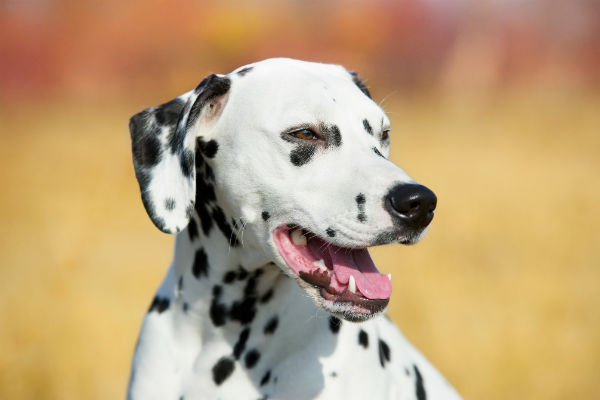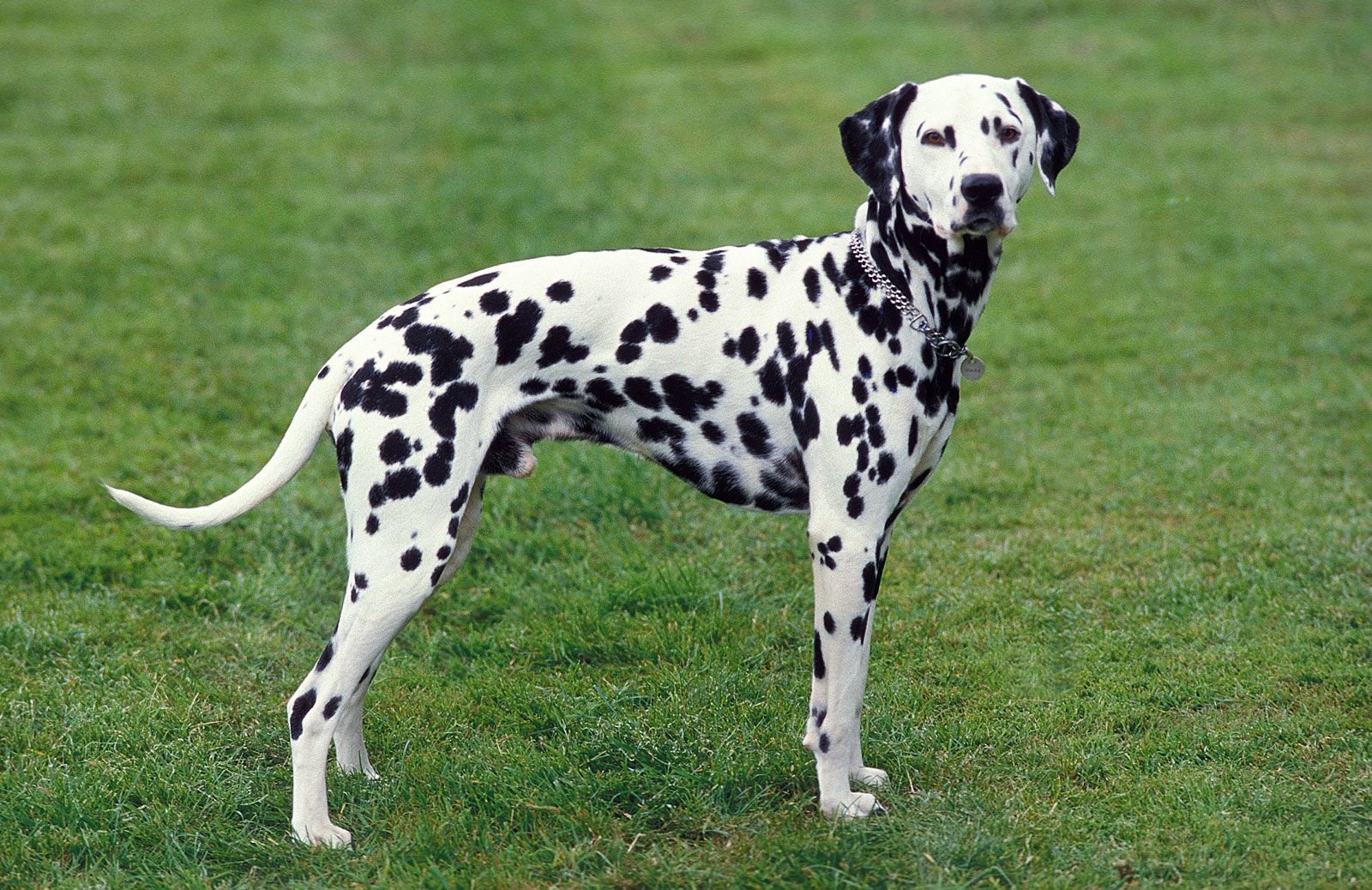Dalmatians, known for their distinctive spots, hold a captivating secret in their DNA. Did you know that all Dalmatian puppies are born completely white? It is only as they grow older that their spots start to appear. But what is the breeding process behind these iconic dogs?
The breeding of Dalmatians is an intricate process that requires careful consideration. Historically, Dalmatians have been bred for their unique appearance and temperament. Breeders aim to produce puppies with well-defined spots, the appropriate body structure, and the energetic and friendly personality that these dogs are known for. However, breeding Dalmatians also presents a challenge in reducing the occurrence of certain genetic health issues. Due to the breed’s susceptibility to deafness, responsible breeders make use of health testing and selective breeding to minimize these risks. With a combination of genetics and careful selection, breeders strive to produce healthy and well-rounded Dalmatian puppies, ensuring that these remarkable dogs continue to capture our hearts.

How are Dalmatians Bred?
Dalmatians are a unique and striking breed known for their spots and energetic personalities. If you’ve ever wondered about the process of breeding Dalmatians or are interested in becoming a breeder yourself, this article will provide you with all the information you need. From selecting the right breeding pair to caring for the puppies, we’ll cover every aspect of how Dalmatians are bred.
1. The Importance of Selecting the Right Breeding Pair
Breeding Dalmatians starts with careful consideration of the two dogs that will be mated. It’s crucial to select healthy adults that meet the breed standards and possess desirable traits. This includes evaluating their physical appearance, temperament, and genetic health. Breeders often consult with experts and conduct thorough health screenings to ensure the parents are free from any hereditary health issues that could be passed onto their offspring. By selecting the right breeding pair, breeders aim to improve the breed’s overall quality and maintain its distinct characteristics.
When choosing a breeding pair, it’s essential to assess their compatibility. This involves evaluating their compatibility in terms of temperament, size, and appearance. Additionally, considering their lineage and pedigree can provide insight into any potential genetic issues that may be present in the bloodline. Responsible breeders avoid breeding dogs that are closely related to minimize the risk of inherited conditions. With careful consideration and extensive research, breeders can select the right pair to produce healthy and well-bred Dalmatian puppies.
2. The Mating Process
Once the breeding pair has been selected, it’s time to proceed with the mating process. Dalmatians typically reach sexual maturity between six months and one year of age. Breeders carefully monitor the female dog’s reproductive cycle, known as the estrous cycle, to determine the optimal time for breeding. During this time, the female dog will exhibit physical and behavioral changes indicating she is ready to mate.
When the female is in “heat,” breeders will introduce her to the male. This can either be done by bringing the male to the female’s location or vice versa. It’s essential to create a calm and comfortable environment for the dogs to ensure a successful mating. While it’s natural for some dog owners to leave the dogs alone during mating, it’s advisable to supervise the process to ensure it goes smoothly and to avoid any potential injuries.
2.1. Gestation Period and Preparing for Puppies
After a successful mating, the female Dalmatian will undergo a gestation period of approximately 63 days. During this time, it’s important to provide the pregnant dog with proper nutrition, regular exercise, and proper veterinary care. A balanced diet rich in essential nutrients will support the growth and development of the puppies.
As the due date approaches, breeders will prepare a whelping box or area for the female to give birth. This area should be warm, comfortable, and secure to ensure the safety of both the mother and her puppies. It’s recommended to provide the necessary supplies such as clean towels, blankets, and a heating source to maintain the ideal temperature for the newborns.
3. Caring for Dalmatian Puppies
Once the puppies are born, breeders must provide them with proper care and attention. This includes regular feeding, socialization, and veterinary check-ups. Dalmatian puppies have specific nutritional needs, and it’s crucial to provide them with a balanced diet suitable for their age. The mother’s milk will typically fulfill their nutritional requirements during the first few weeks of life.
Socialization is a vital aspect of raising healthy and well-rounded Dalmatians. Breeders should expose the puppies to different people, animals, and environments from an early age to help them develop confidence and adaptability. Regular playtime and positive interactions with humans and other dogs can contribute to their overall development and temperament.
Breeders must also keep track of the puppies’ health and ensure they receive necessary vaccinations and deworming treatments. It’s recommended to establish a relationship with a trusted veterinarian who can guide breeders through this process and provide any necessary medical care for the puppies.
Dalmatian Breeding: Tips for Success
1. Educate Yourself about the Breed
Before embarking on the journey of breeding Dalmatians, it’s crucial to thoroughly educate yourself about the breed. Understand their characteristics, needs, and potential health issues. Joining breed clubs, attending dog shows, and consulting experienced breeders can provide invaluable insights and guidance.
2. Establish a Network of Support
Building a network of experienced breeders and mentors is incredibly beneficial for those starting in the breeding world. Connecting with fellow Dalmatian enthusiasts and professionals will provide support, advice, and guidance throughout the breeding process.
3. Prioritize Health and Genetic Testing
Maintaining the health and well-being of Dalmatians should always be a top priority for breeders. Conduct thorough health screenings and genetic tests to identify and eliminate potential hereditary issues from the breeding stock. This practice helps preserve the breed’s integrity and ensures healthy puppies.
4. Ethical Breeding Practices
Breeders should always prioritize ethical and responsible breeding practices. This includes promoting healthy breeding practices, adhering to breed standards, and only breeding dogs with sound temperaments and good overall health. Breeding should never be solely driven by financial gain, but rather by a genuine commitment to the breed.
5. Connect with Potential Puppy Owners
Establishing connections with potential puppy owners is essential in finding suitable homes for the puppies. Maintaining contact with these individuals can offer ongoing support and ensure that the puppies are placed in loving and responsible homes.
6. Lifelong Commitment
Remember that breeding Dalmatians is not a one-time endeavor. It requires a lifelong commitment to the breed, including ensuring the well-being of the dogs you’ve bred even after they go to their new homes. Stay connected with puppy owners, provide continued guidance, and be available for any questions or concerns that may arise.
In conclusion, breeding Dalmatians is a rewarding but demanding endeavor that requires careful selection, proper care, and a strong commitment to the breed’s well-being. By adhering to responsible breeding practices and putting the dogs’ health and welfare first, breeders can contribute to the preservation and improvement of the Dalmatian breed.”
Key Takeaways: How are Dalmatians Bred?
- Dalmatians are bred through a selective breeding process.
- Breeders look for healthy and suitable parent dogs.
- Good breeders ensure that both parents have no genetic health issues.
- Mating is carefully planned to produce puppies with desired traits.
- Dalmatian puppies are nurtured and socialized from a young age.
Frequently Asked Questions
Curious about how Dalmatians are bred? Look no further! Below, we’ve answered some common questions about the breeding process.
1. What is the typical breeding age for Dalmatians?
Dalmatians typically reach sexual maturity between the ages of six and twelve months. However, it’s important to wait until they are at least two years old before breeding them. This allows them to fully develop physically and emotionally to ensure a healthy pregnancy and litter.
Additionally, it’s crucial to consider the health and genetics of the individual dog before breeding. Genetic testing can be done to identify any potential health issues and help prevent passing them on to the offspring.
2. How are Dalmatians bred?
Dalmatians are typically bred through natural mating. The male and female dogs are brought together when the female is in heat, which is when she is fertile. They are supervised during the mating process to ensure successful copulation. It’s important to note that breeders should have a thorough understanding of canine reproduction and guidance from a veterinarian.
In some cases, artificial insemination may be used. This technique involves collecting semen from the male Dalmatian and introducing it into the female’s reproductive system. Artificial insemination can be beneficial for various reasons, such as when the male and female dogs are in different locations, or when there are breeding challenges due to physical limitations or health issues.
3. How many puppies are typically in a Dalmatian litter?
The average litter size for Dalmatians ranges from 6 to 9 puppies, although smaller or larger litters are not uncommon. The size of the litter can depend on various factors such as the age of the mother, her overall health, and genetics.
It’s essential for breeders to provide proper care and attention to both the mother and the puppies throughout the breeding process and after birth. This includes regular veterinary check-ups, a balanced diet, and a safe and comfortable environment.
4. Are there any specific considerations when breeding Dalmatians?
Yes, there are a few specific considerations when breeding Dalmatians. Firstly, it’s crucial to be aware of the breed’s potential genetic health issues, such as deafness and bladder stones. Genetic testing can help identify carriers of these conditions to prevent their inheritance.
Additionally, Dalmatians have a unique coat pattern that results from a specific genetic mutation. Breeding two Dalmatians with this mutation increases the likelihood of producing offspring with the desired coat pattern. However, it’s important to balance this with the overall health and temperament of the dogs.
5. How long is the gestation period for Dalmatians?
The gestation period for Dalmatians is approximately 63 days, which is the average length for most dog breeds. It’s important for breeders to monitor the pregnant Dalmatian closely during this time, ensuring she receives proper nutrition, exercise, and veterinary care.
Once the puppies are born, they require continuous care and attention for several weeks until they are ready to go to their new homes. This includes regular feeding, socializing, and veterinary check-ups to ensure their healthy development.

The truth about Dalmatians | Beautiful dog breed
Summary
Dalmatians are bred by responsible breeders who focus on health, temperament, and conformation. Breeding pairs are carefully selected based on their genetic background and breed standards to produce healthy and well-rounded puppies. It is important to avoid backyard breeding and choose reputable breeders who prioritize the welfare of the dogs. Proper care and socialization are crucial for Dalmatian puppies to grow up happy and well-adjusted. Remember, owning a Dalmatian is a lifelong commitment that requires dedication and love.
In conclusion, breeding Dalmatians involves thoughtful selection, responsible breeding practices, and prioritizing the well-being of the dogs. Choosing a reputable breeder and providing proper care is essential for raising a healthy and happy Dalmatian.
